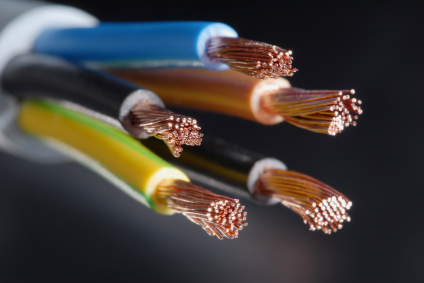Semiconductor Physics
Before going to learn the concepts about diodes, transistors, amplifiers etc. first we have to know about the materials used in those devices. so, the diodes made up of with semiconducting materials. how these semiconducting materials are different from conductors and insulators.
Conductors are also called as carrier of electricity. The resistivity of the conductors much less than insulators as well as semiconductors. Best examples of conductors are metals.
Copper is a good conductor. It's resistivity is around 1.7х10^-8 Ωm.
The materials which have very high resistive properties are called as insulators. so they are didn't carry any electricity in it. The better example for insulator is glass it's resistivity is around 9x 10^11 Ωm.
Germanium and silicon are the best examples of semiconductors and their resistivity around 0.6Ωm.
These are having a NEGATIVE temperature coefficient of resistivity. I.e. the resistivity of temperature decreases by increasing the temperature.
When we add an impurity like Arsenic, Gallium to the semiconducting materials then the current conducting properties changes appreciably.
Extrinsic semiconductors:
Types of materials:
- Conductors
- Insulators
- Semiconductors
Conductors:
Conductors are also called as carrier of electricity. The resistivity of the conductors much less than insulators as well as semiconductors. Best examples of conductors are metals.
Copper is a good conductor. It's resistivity is around 1.7х10^-8 Ωm.
 |
| conductors |
Insulators:
The materials which have very high resistive properties are called as insulators. so they are didn't carry any electricity in it. The better example for insulator is glass it's resistivity is around 9x 10^11 Ωm.
 |
| insulators |
Semiconductors:
The resistivity of these materials is lies between the values of conductors as well as insulators. These are not as good as highly capable of passing electricity as conductors. And not as bad as insulators also, so these are the best choices to improve a modified electric conductor with our requirement.Germanium and silicon are the best examples of semiconductors and their resistivity around 0.6Ωm.
Properties of semiconductors:
The resistivity value of semiconductor lies between the values of conductor and insulator.These are having a NEGATIVE temperature coefficient of resistivity. I.e. the resistivity of temperature decreases by increasing the temperature.
When we add an impurity like Arsenic, Gallium to the semiconducting materials then the current conducting properties changes appreciably.
Types of semiconductors:
Intrinsic semiconductors:
The semiconductor which is available in extremely pure form is known as intrinsic semiconductors.
| semiconductor- silicon(Si) |
Extrinsic semiconductors:
For getting better conducting properties of a semiconductor we are added some impurity to the purest form of it. Based on the impurity we added these may defined as,
N-TYPE semiconductors P-TYPE semiconductors
Impurity added: Pentavalent Trivalent
Majority carriers: Electrons Holes
Minority carriers: Holes Electrons
Example of impurity: Arsenic(As) Gallium(Ga)
| p-type semiconductor |
| n-type semiconductor |






















No comments